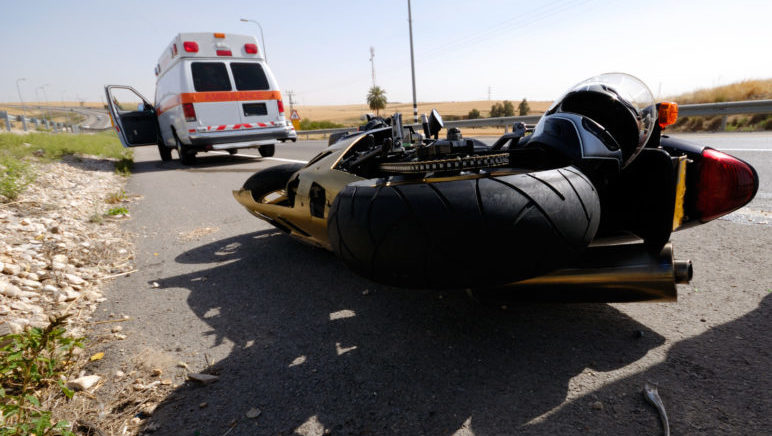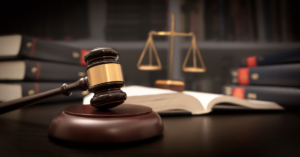Radio Law Talk Segment
Highway Guardrail Fraud Scheme Debunked
INTRO:
On September 29, 2017, the United States Court of Appeals for the Fifth Circuit ruled that Trinity Industries Inc. did not commit fraud against the United States, reversing the District Court’s $663 million judgment.
FACTS (brief, 6 sentences):
Joshua Harmon filed a False Claims Act against Trinity Industries Inc., a company involved in the manufacture of a highway guardrail system, alleging that the company defrauded the United States government in regards to its highway guardrail system. Specifically, Harmon contended that Trinity did not report all the changes it made to the guardrails in 2005 to the Federal Highway Administration (FHWA). He argued that the changes in the guardrails made the system less safe and these concealed modifications resulted in improper claims for federal-aid reimbursement. Conversely, Trinity contends that the changes were not material, the guardrails are safe, and that no notification was needed. On appeal, the Fifth Circuit found that Harmon did not meet his burden under the False Claim Act, reversing the lower court. This highly contentious issue involves millions of dollars and is expected to impact Trinity’s stock.
ISSUES (Summarize both sides argument, both perspectives. You can use bullet points):
- Did Trinity Industries Inc. defraud the U.S. government with a faulty highway guardrail safety system?
- No:
- Under Harmon v. Trinity Indus. Inc., 5th Cir., No. 15-41172:
- Harmon has not met the burden under the False Claims Act.
- Although the guardrails cannot protect from all possible collisions, “the U.S. government has never declared the challenged Trinity design unsafe.” In fact, FHWA continued to reimburse the ET-Plus units with full knowledge of Harman’s claims about the alleged product deficiencies.
- The government also repeatedly concluded that it had not been defrauded. Specifically, between November 2014 and January 2015, state, federal, and foreign transportation experts concluded that the units that were crash tested with the changes, were representative of the devices installed across the country.
- Harmon was a one-time competitor of Trinity and had a past history of adversarial litigation which may raise an eyebrow
- Trinity argued that the changes were not material and the revised guardrail was not unsafe. Specifically, Trinity argued that the change had no effect on how well the rail performed following U.S. crash tests.
- Jeff Eller, a Trinity spokesman, said, “As this court has previously noted, the federal government has consistently reaffirmed the ET Plus System meets all federal safety performance standards. This ruling affirms our longstanding belief that the ET Plus System is safe and no fraud was committed. We are proud of standing strong and fighting for our beliefs.”
- Trinity argues that Harman failed to meet his burden on each element of the claim under the False Claim Act. Trinity also argues that the 2005 changes did not have to be disclosed to the FHWA. Alternatively, Trinity contends the disclosure requirements were ambiguous enough that its interpretation was reasonable.
- Under the materiality requirement of the False Claims Act, the FHWA insists that the 2005 changes did not impact decisions to purchase part of the guardrail either in the past or the future. Following case law in Universal Health Servs., Inc. v. United States ex rel. Escobar, 136 S.Ct. 1989 (2016), a decision to pay in full despite actual knowledge that requirements were violated is very strong evidence against the materiality of those requirements, although not dispositive evidence. The court found that the FHWA knew about changes to the guide channel width and attendant fabrication changes when it expressed its continued approval of the ET-Plus system.
- At best roadside barriers can only mitigate the risks on the highways—they cannot erase all the risks.
- Yes
- Plaintiffs in the lawsuit and Trinity competitor Joshua Harmon argue that the changes in the guardrail system made it less safe.
- After the jury verdict, many states removed Trinity’s ET Plus guardrail from their qualified-products list.
- At one point in time, the U.S. Justice Department started a criminal investigation that has since been abandoned.
- Karen Dyer, an attorney for Boies Schiller Flexner LLP, which represented Harman, stated, “We believe the jury properly assessed the evidence in this case and reached the right verdict.”
- The heart of the issue involved that Trinity knowingly made false certifications of U.S. approval of the new guardrail design to its customers and state departments of transportation, and concealed modifications from the Federal Highway Administration, which resulted in improper claims for federal-aid reimbursement. Harmon argues that there was sufficient evidence in the record for a reasonable jury to conclude that Trinity knowingly misstated compliance with the FHWA regulations in marketing the ET-Plus or that its false statements were motivated as potential profits. To support these claims, Harmon presented a 2004 email from Trinity’s Vice President noting a potential savings if these changes were made. Harmon further asserts that Trinity’s wrongful intent is evidenced by its own actions to conceal fraud by not mentioning the changes to the FHWA before the May 2005 crash tests.
- Yes
- Under Harmon v. Trinity Indus. Inc., 5th Cir., No. 15-41172:
- No:
LAW (with references, no need for blue book citations. This is the most important part, make sure the attorneys can answer any questions from callers on the topic. You can use bullet points):
- The False Claims Act: 31 U.S.C.A. § 3729:
- This act imposes liability on individuals who defraud the federal government
- To determine liability under the False Claim Act courts must ask:
- (1) whether there was a false statement or fraudulent course of conduct;
- (2) made or carried out with the requisite scienter;
- (3) that was material; AND
- (4) that caused the government to pay out money or to forfeit moneys due (i.e. that involved a claim)
- Scienter Requirement under the False Claims Act:
- The requisite scienter requirement is under § 3729(b)’s definition of the terms knowing and knowingly, which means a person has actual knowledge of the information; acts in deliberate ignorance of the truth or falsity of the information; or acts in reckless disregard of the truth or falsity of the information. Although the terms knowing and knowingly do not require proof of the specific intent to defraud, the mens rea requirement is not met by mere negligence or even gross negligence.
- Materiality under the False Claims Act:
- Under Universal Health Servs., Inc. v. United States ex rel. Escobar, 136 S.Ct. 1989 (2016), the court held that under the False Claims Act “the materiality standard is demanding” and “cannot be found where noncompliance is minor or insubstantial.” The court further noted that the term “material” means having a natural tendency to influence.
- The False Claims act requires proof only that the defendant’s false statements could have influenced the government’s pay decision, not that the false statements actually did so.
- Although not dispositive, continued payment by the federal government after it learns of the alleged fraud substantially increases the burden on the realtor in establishing materiality.
- Occupational Safety and Health Act of 1970 (“OSH Act”):
- The Occupational Safety and Health Administration is charged with the protection of whistleblowers who report legal violations.
DETAILED FACTS (tell the story):
Highway guardrail systems were introduced to prevent drivers from running off the road, but also created a significant risk to drivers—in a head on collision with an automobile, the ends of the guardrails can penetrate vehicles’ passenger compartments. In order to combat this problem, Texas A&M Transportation Institute (TTI) created the ET-Plus system (in a head on collision, the end of the guardrail head flattens and extrudes the guardrail away from the vehicle while simultaneously designed to slow speeds to survivable stops). A subsidiary of Trinity Industries Inc., Trinity Highway Products, LLC, manufactures the ET-Plus system. In 2005 Trinity modified the ET-Plus systems and sent a report to the FHWA. The body of that 2005 crash test report discusses some of the changes, but not the changes in the guide channel width. Harmon, a competitor of Trinity, claimed that the changes in the ET-Plus system resulted in a completely new product. On March 6, 2012, Harman filed a sealed False Claims Act suit in the Eastern District of Texas, which the court unsealed. In later proceedings, Trinity renewed a motion for judgment as a matter of law under Rule 50(b)(6). The court later denied the motion and entered final judgment the same day for Harman and the U.S.
The Fifth Circuit Court of Appeals on Sept. 29, 2017, overturned a judgement that would have resulted in Trinity Industries Inc. paying a $633 million award in a whistle-blower lawsuit. In Harmon v. Trinity Indus. Inc., 5th Cir., No. 15-41172, the court overturned a 2015 judgment that followed a Texas jury’s finding that the company defrauded the U.S. government by selling its ET Plus highway guardrail system without disclosing changes that were made in 2005. In 2005, the company modified the guardrail by reducing the width of the guide channels from 5 to 4 inches. The company argued that these changes were no significant and as such did not require notification. The Texas jury awarded $175 million in damages, which was tripled under federal whistle-blower law. Rodney Gilstrap, the U.S. District Judge, upheld the verdict and added $138 million in penalties. Following the jury verdict, the Federal Highway Administration (FHWA) ordered a review of the ET Plus System. In the review, the system passed all crash tests and is still eligible for federal-aid reimbursement. Trinity subsequently appealed denying the fraud and disputing the damages. The whistle-blower action is one of a series of claims filed over the guardrail, which includes class actions alleging deceptive practices, and investor suits. In the Whistleblower action Harman also alleged that the Trinity’s ET Plus system was supposed to make the end of a guardrail into a de facto shock absorber, but the guardrail was not doing that. Rather, it was locking up when hit. Additionally, the federal government paid to install the guardrails throughout the country and refused to remove them.
OTHER FACTS (interesting facts, related facts, trivia, etc.):
- After the Court of Appeals holding, Trinity shares jumped about 11 percent in after-hours trading.
ARTICLE LINKS (so we can print them out):
- https://www.bloomberglaw.com/exp/eyJpZCI6IjAwMDAwMTVlZGQwOWRmOWJhOWZmZmYyYjM1MWIwMDAwIiwiY3R4dCI6IkJCTkEiLCJ1dWlkIjoiSUxiVVBOUTQ2VFlSQ29hK0xuWDBOdz09VmRpM1I0K0hXWDJkTC9jekRtTWl6QT09IiwidGltZSI6IjE1MDcyMTY5NTgyNjYiLCJzaWciOiJTelVPRm9BeTJiR3VLT2J6S2I1YnJQMTdXTGs9IiwidiI6IjEifQ==?emc=bnapslr:3
- http://www.ca5.uscourts.gov/opinions/pub/15/15-41172-CV0.pdf
- http://www.acc.com/legalresources/quickcounsel/whistleblowing.cfm
MEDIA (less than a 2 minutes FUNNY sound bite. You can include a couple of options. We realize that for some topics there is not much):




